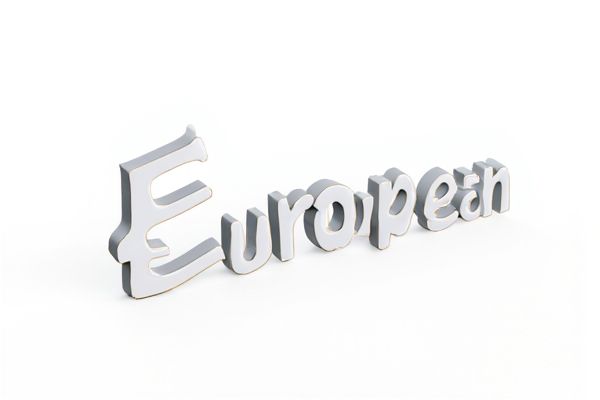
Explore a unique variety of languages with our online random European language generator, designed to inspire creativity and learning. This tool provides instant access to diverse linguistic options, helping users discover new phrases and vocabulary effortlessly. Perfect for educators, students, and language enthusiasts looking to broaden their cultural horizons.
Online tool for random european language generator
We have prepared a few samples for a random European language generator that you can use and customize. You can enter your own list and generate a randomized selection with just one click. This tool instantly provides a randomized list and a single value for easy use.Data Source
Single Result
Multiple Results
Introduction to Random European Language Generators
Random European language generators create unique text samples by combining vocabulary, grammar rules, and phonetic patterns from diverse European languages such as Spanish, German, French, and Italian. These tools facilitate linguistic research, creative writing, and language learning by simulating plausible language structures, aiding in understanding syntax and morphology variations. Employing algorithms and databases of linguistic features, random European language generators offer customizable outputs tailored to specific language family characteristics or stylistic preferences.
Importance of Language Diversity in Europe
Europe hosts over 200 languages, reflecting its rich cultural heritage and historical complexity. Preserving language diversity supports social inclusion, promotes cross-cultural understanding, and strengthens regional identities across the continent. Random European language generators facilitate language learning and appreciation, enhancing awareness of Europe's multilingual landscape.
Key Features of an Effective Language Generator
An effective random European language generator must support diverse language models representing major linguistic families such as Romance, Germanic, and Slavic to enhance authenticity. High-quality phonetic algorithms and grammar rule integration ensure generated names, words, or phrases are contextually plausible and culturally consistent. Customizable parameters for dialect variations and character sets improve user control, making the generator suitable for applications in linguistics, gaming, and creative writing.
Popular Use Cases for Random Language Selection
Random European language generators are widely used in language learning platforms to help students practice vocabulary and grammar in unpredictable yet relevant linguistic contexts. They serve game developers and app creators by providing dynamic language inputs for multilingual games, quizzes, and interactive storytelling, enhancing user engagement across diverse audiences. Content creators and marketers utilize these generators to simulate multicultural environments and tailor messages for targeted European language demographics, improving localization strategies and cultural resonance.
Overview of European Language Families
European language families encompass diverse linguistic groups including Romance, Germanic, Slavic, Baltic, and Celtic languages, each with distinct historical roots and structural features. A random European language generator leverages these classifications by selecting from language samples representing phonetic, grammatical, and lexical characteristics unique to each family. This approach ensures the generated languages reflect authentic linguistic diversity found across the European continent, aiding in language learning, artificial language creation, and computational linguistics research.
Algorithms Behind Language Randomization
Language randomization algorithms utilize probabilistic models and Markov chains to generate coherent and diverse European language outputs. These methods analyze large corpora to identify linguistic patterns such as phoneme distribution, syntax rules, and morphological structures, ensuring generated text mimics natural language characteristics. Advanced generators integrate neural networks and deep learning techniques to enhance contextual relevance and semantic accuracy within randomized language samples.
Integration with Language Learning Tools
Random European language generators enhance language learning tools by providing diverse vocabulary and grammar structures from multiple languages such as Spanish, German, French, and Italian. These generators facilitate immersive practice by generating authentic sentences and expressions, improving learners' comprehension and retention. Integration with interactive platforms and apps like Duolingo or Memrise supports personalized learning paths and real-time feedback.
Challenges in Generating Authentic European Languages
Generating authentic European languages poses significant challenges due to the complexity of phonetic variations, morphological structures, and syntactic rules unique to each language. Accurate replication requires extensive linguistic databases that capture regional dialects, idiomatic expressions, and historical language evolution. Maintaining cultural relevance while avoiding stereotypical or artificial constructs is essential for generating believable and natural language output.
Security and Privacy Considerations
Random European language generators must implement robust encryption protocols to protect user data from unauthorized access and ensure privacy. Data anonymization techniques and strict compliance with GDPR regulations are critical to prevent the misuse of personal information during language generation processes. Secure APIs and regular security audits minimize vulnerabilities and maintain the integrity of language generation outputs.
Future Trends in Language Generation Technology
Future trends in random European language generators emphasize enhanced neural network models capable of producing syntactically coherent and contextually rich sentences across multiple languages, including less commonly spoken dialects. Advances in transformer architectures and multilingual training datasets enable more accurate phonetic and morphological variations, improving realism in generated text. Integration with AI-driven linguistic analysis tools supports adaptive language generation, facilitating personalized and context-aware interactions in language learning and localization applications.
 azrandom.com
azrandom.com